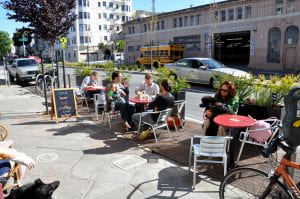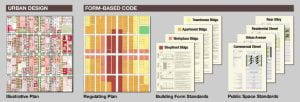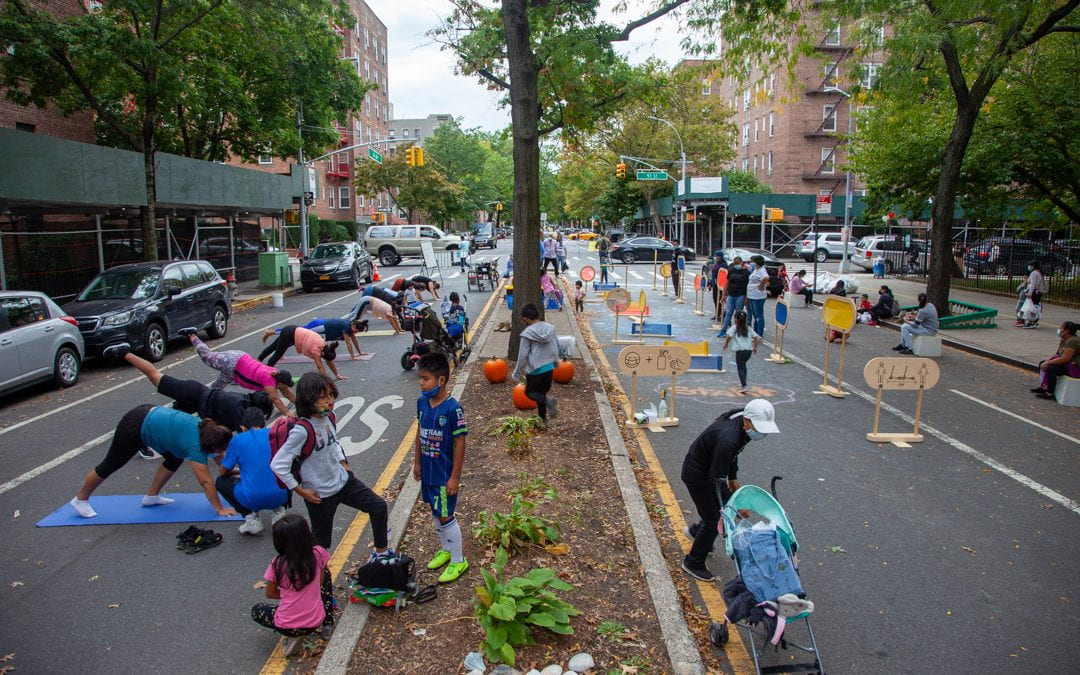Land use and urban planning scholars from around the world have proposed innovative strategies to make parking more sustainable. Adaptive reuse policies allow parking areas to be transformed into spaces for other uses, such as housing, farming, and shopping. Local governments can remove parking minimums or implement maximums to curb the overabundance of parking spaces. They can also make existing parking lots more environmentally friendly by using vegetative landscaping and obtaining ParkSmart certification.
While many municipalities have used their state-delegated land use authority to pursue these strategies, it is often difficult to do so. Luckily, there are certain enabling conditions that can help make their implementation more widespread throughout the United States. According to the IPCC, enabling conditions are those that “enhance the feasibility of adaptation and mitigation options.” In the context of reimagining parking in the United States, psychology and governance are two of the most opportune enabling conditions.
The Psychology of Parking
Many people have a rocky relationship with parking. The average American spends 17 hours per year searching for an open parking space, costing them $345 in wasted time, gas, and emissions. The same study found that the search for parking has adverse impacts: 63% of survey respondents reported that they have avoided driving to destinations due to perceived lack of parking, 61% reported that they have felt stressed while searching for parking, 42% reported that they have missed an appointment due to parking issues, and 23% reported that they have experienced road rage due to parking issues.
With so many people experiencing internal and external difficulties when looking for parking, it’s no wonder that the average American thinks there is a shortage of space. Yet, the opposite is true. It has been estimated that there are as many as 8,000,000,000 parking spaces in the United States; six for every American – and not every American has a car, let alone a driver’s license. Decades of unsustainable urban planning decisions have resulted in a substandard distribution of parking and the underdevelopment of alternative transportation infrastructure that would reduce the need for parking all over the United States. So, even though there are more than enough parking spaces for all of us, spaces are not available where we need it, when we need it.
Even with so many feeling the perils of parking, demand has been declining. Over the past few years, the rise of e-commerce, rideshare, remote work, and public transportation have led to people driving less. Many municipalities are looking to combat their overabundance of poorly distributed and increasingly unused parking space. Often, these solution-oriented municipalities have sought to address the codependent psychology of parking by helping residents understand the alternative uses available.
Park(ing) Day and Open Streets
Park(ing) Day is a global movement in which curbside parking is temporarily repurposed for other uses. Held every fall, over 150 cities participate in Park(ing) Day each year. Municipalities such as Plano, TX, Frederick, MD, and Franklin Park, IL have incorporated Park(ing) Day into their comprehensive plans. Their programs have seen parking spaces transformed into curbside libraries, mini-parks, and play areas for children.

Park(ing) Day 2008 (Flickr)
Similarly, cities in all regions of the world have piloted ‘open streets’ programs, in which streets are closed to vehicle traffic and parking. Instead, pedestrians are free to use the street for other purposes. New York City’s Open Streets Program was enacted by legislation in 2021 and is overseen by the Department of Transportation. Currently, nearly 200 streets across all five boroughs have some sort of open streets schedule.

NYC’s Open Streets Program (NYC DOT)
Parklets
While both Park(ing) Day and Open Streets are temporary solutions to change the current psychology of parking, some municipalities have implemented parklets to make such changes permanent. Parklets are curbside parking spaces that have been converted into outdoor dining and recreation spaces. Parklets grew in popularity during the pandemic and have remained in many cities throughout the country, including in Seattle, WA, Arlington, VA, and New York, NY. As they’ve become more widespread, land use scholars have analyzed the benefits and disadvantages of parklets. Neighborhoods with parklets have seen increased foot traffic, which leads to economic growth for local businesses. Additionally, parklets provided a safe way for people to get together and eat while social distancing during the pandemic.
That said, scholars have criticized parklets for introducing noise and environmental pollution into communities that oftentimes didn’t have a say in the permitting process. Experts have also criticized parklets as inequitable (when placed predominantly in wealthy neighborhoods), inaccessible (when they intrude on sidewalk space needed by those with disabilities), and obtrusive (when they remove parking which some small businesses rely on).
Fortunately, cities have responded to these criticisms by improving their parklet programs. San Francisco, CA requires that “shared spaces” (including parklets) be equitable and accessible for all. Chicago, IL changed their parklet permitting process to ensure that community organizations, instead of business owners, were the ones requesting parklets in their neighborhoods. By addressing concerns and appropriately implementing parklets, municipalities are using their state-delegated land use authority to help residents see that parking spaces can be used for other, better purposes.

Parklets in San Francisco, CA (Flickr)
The Issue of Parking Governance
Addressing the myriad problems and intricacies associated with parking requires practical and informed leadership from dedicated civil servants. Unfortunately, many municipalities don’t have departments, offices, and/or personnel designated specifically for parking. How can local governments possibly be expected to change the psychology of parking and implement sustainable solutions without a strong governance framework?
Take, for instance, the city of Norfolk, VA. Its parking department’s priorities include meters, citations, tickets, permits, and enforcement. The director, Ray Stoner, has a background in business administration. The city of New Haven, CT, for comparison, has a parking department that prioritizes climate adaptation, pedestrian-centered development, and sustainable public transportation. Its director, Sandeep Aysola, has a background in civil engineering and environmental management. When municipalities have a designated parking division with personnel who are trained in the management and sustainability of urban spaces, they are best equipped to implement innovative parking solutions. With good parking governance, fresh ideas, community input, and needed expertise are brought to the table.
The adoption of form-based codes is another way in which municipalities can bolster their parking governance. As opposed to traditional use-based codes, form-based codes use physical form as the organizing principle for creating a predictable and consistent built environment. Municipalities can use such codes to ensure that parking requirements match the form of the neighborhood they’re built in.
Palm Desert, CA implemented a form-based code that required developers to get a parking determination from government officials before building parking spaces. As opposed to arbitrary standards set by the Institute of Transportation Engineers, these determinations are made by professionals with the expertise necessary to understand the intricacies of parking in the context of the communities they serve. Additionally, Palm Desert’s form-based code requires all curbside parking in the University Neighborhood area to be alternated with planters and asks developers to consider bicycle parking, as well as the use of pervious materials for parking spaces.

Common Features of Form-Based Code (Wikipedia)
Every year, more and more municipalities implement sustainable parking solutions by first addressing its enabling conditions. One such municipality is Kingston, NY. To challenge the existing psychology of parking, they participate in Park(ing) Day and are home to the creation of multiple curbside parklets throughout the city. To build strong parking governance, they’ve adopted form-based parking codes and implemented a supply and parking demand reduction strategy. By addressing both enabling conditions, Kingston’s transition to sustainable parking strategies has been accomplished easier and quicker. Thus, Kingston, NY serves as an example for other municipalities all over the United States who hope to one day transform parking in their communities too.

